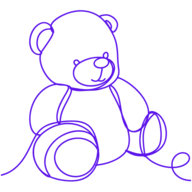Welcome to the world of toy marketing, where creativity meets strategy. This blog post will delve into the most effective marketing strategies for toy brands. We'll explore how to capture the attention of both children and their parents, create a lasting brand image, and ultimately drive sales. Whether you're a seasoned marketer or a toy brand just starting out, this comprehensive guide will provide valuable insights to help you succeed.
Understanding Your Target Audience
Let's start by understanding the importance of knowing your target audience. In the toy industry, this typically includes children who will use the toys and parents who will buy them. A deep understanding of both these segments is crucial for developing effective marketing strategies.
Children are the primary users of toys. They are attracted to bright colors, interesting shapes, and toys that allow them to use their imagination. However, their preferences can vary greatly depending on their age, gender, and interests. For instance, toddlers might be drawn to plush toys and building blocks, while older children might prefer action figures or educational games. Conducting market research can help you understand these preferences and develop toys that children will love.
Parents, on the other hand, are the primary purchasers of toys. They are concerned about the safety, educational value, and durability of the toys they buy. They also value toys that keep their children engaged for extended periods. Therefore, your marketing strategies should highlight these aspects to appeal to parents.
Creating a Strong Brand Image
Once you understand your target audience, the next step is to create a strong brand image. This involves developing a unique brand identity, creating high-quality products, and delivering a consistent brand message.
Your brand identity should reflect the values and personality of your toy brand. It includes elements like your brand name, logo, and color scheme. These elements should be distinctive and appealing to both children and parents.
The quality of your products is another crucial aspect of your brand image. Parents are more likely to buy toys that are durable and safe for their children. Therefore, investing in high-quality materials and manufacturing processes can enhance your brand image and increase customer loyalty.
Your brand message should communicate the unique benefits of your toys. It should resonate with your target audience and differentiate your brand from competitors. For example, if your toys are made from eco-friendly materials, your brand message could emphasize your commitment to sustainability.
Leveraging Digital Marketing Channels
In today's digital age, online marketing channels offer a cost-effective way to reach your target audience. These include social media, email marketing, and search engine optimization (SEO).
Social media platforms like Facebook, Instagram, and YouTube are popular among both children and parents. They allow you to showcase your toys in a visually appealing way and engage with your audience. You can also use these platforms to run contests, share customer testimonials, and announce new product launches.
Email marketing is another effective channel for reaching parents. You can use it to send personalized offers, share educational content, and keep your brand top of mind. To build your email list, consider offering a freebie or discount in exchange for email sign-ups on your website.
SEO can help your website rank higher in search engine results, making it easier for parents to find your toys online. This involves optimizing your website content with relevant keywords, improving your website's loading speed, and earning backlinks from reputable websites.
Collaborating with Influencers
Influencer marketing is a powerful strategy for toy brands. It involves partnering with influencers who have a large following of parents or children. These influencers can review your toys, create engaging content around them, and recommend them to their followers.
When choosing influencers, look for those who align with your brand values and have a genuine connection with their audience. Micro-influencers, who have a smaller but highly engaged following, can also be a good choice.
Remember to provide clear guidelines to influencers about how to represent your brand. However, also allow them the creative freedom to present your toys in a way that resonates with their audience. This can make their endorsement more authentic and effective.
Hosting Interactive Events
Hosting interactive events can create a memorable experience for children and parents, and generate buzz around your toy brand. These events could include toy fairs, playdates, or online gaming tournaments.
At these events, children can try out your toys and engage in fun activities. Parents can see firsthand how your toys provide educational value and keep their children engaged. This can help them appreciate the quality of your toys and make a purchase decision.
To promote your events, leverage your digital marketing channels and local media. You can also partner with other businesses to reach a larger audience.
Offering Excellent Customer Service
Last but not least, excellent customer service can set your toy brand apart. This includes providing accurate product information, responding promptly to customer inquiries, and resolving complaints effectively.
Parents appreciate brands that value their feedback and go the extra mile to ensure their satisfaction. Therefore, training your customer service team to deliver a positive customer experience can boost your brand reputation and customer loyalty.
Consider using customer relationship management (CRM) software to manage your customer interactions more efficiently. This can help you track customer inquiries, follow up on them, and provide personalized service.
Wrapping Up: Mastering Toy Brand Marketing
Marketing a toy brand involves understanding your target audience, creating a strong brand image, leveraging digital marketing channels, collaborating with influencers, hosting interactive events, and offering excellent customer service. By implementing these strategies, you can capture the attention of children and parents, differentiate your brand from competitors, and drive sales. Remember, the key to successful marketing is to stay flexible and adapt your strategies based on market trends and customer feedback.

